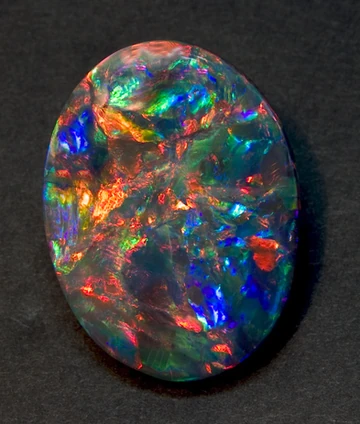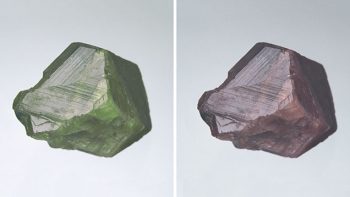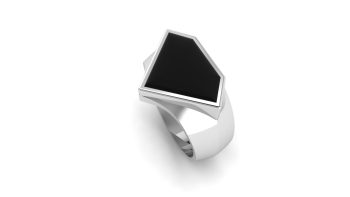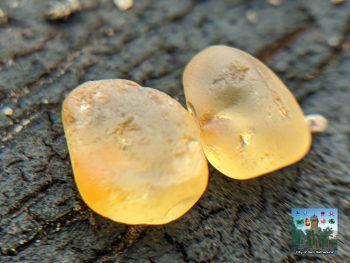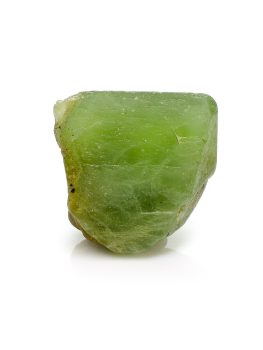Although Black Opals are the most renown and popular opal, they just one of the many varieties of this phenomenal stone. Opals are a stunning species of what are called phenomenal gems. There are a few types of phenomenal gem types such as asterism, chatoyancy, and color change. However, opals show a type of play of phenomenon that no other stone displays. Consequently, this type of phenomenon was named opalescence. It is also known as play of color.
Opals do not enjoy the popularity that they should. Granted, they are soft and can suffer adverse effects from water, but they still make an excellent gemstone choice. Other than birthstone jewelry, you will rarely see them as they are more of a niche gemstone. Despite this, opals, especially black opals, have been highly prized throughout history. In this post, we will discuss all things opal.
What Is An Opal?
An opal is a unique and mesmerizing gemstone that is known for its vibrant play of colors. It is formed from a combination of silica and water, and is typically found in areas with hot and dry climates, such as Australia. Opals come in a variety of colors, including white, black, and fire opal, each with its own distinct beauty. They are often used in jewelry, such as rings and necklaces, and are highly valued for their rarity and aesthetic appeal. Whether you are a gemstone enthusiast or simply appreciate the beauty of nature, exploring the world of opals is sure to captivate and inspire you.
Opal is composed primarily of hydrated silica. Its chemical formula is SiO2·nH2O, where n represents the variable amount of water molecules present in the structure. This unique composition gives opal its characteristic play of colors, known as opalescence. The silica spheres in opal diffract light, resulting in a mesmerizing display of vibrant hues. Opal can also contain trace elements such as iron, manganese, and carbon, which contribute to its color variations.
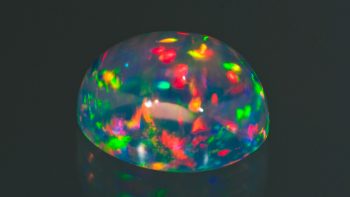
Symbolism Of Opals
Opal is a gemstone known for its mesmerizing play of colors. It is a symbol of hope, purity, and creativity. The symbolism of opal varies across different cultures and beliefs. In ancient times, opal was believed to possess magical powers and bring good luck to its wearer. It was considered a stone of protection and was often used as a talisman. In modern times, opal is often associated with love and passion, as it is believed to enhance emotional and sexual relationships. Overall, opal symbolizes beauty, inspiration, and positive energy.
History Of Opals
Opals have a rich history that dates back thousands of years. They were highly regarded by ancient civilizations such as the Greeks and Romans, who believed that opals possessed magical properties. In fact, the word “opal” is derived from the Greek word “opallios,” which means “to see a change in color.” This is because opals are known for their unique play of colors, which can range from fiery reds and oranges to cool blues and greens.
One of the earliest recorded references to opals can be found in the writings of the Roman naturalist Pliny the Elder, who described opals as having the ability to combine the colors of all other gemstones. This captivating quality made opals highly sought after and prized by the ancient world.
Throughout history, opals have been associated with various legends and superstitions. In medieval times, they were believed to bring good luck and protect against evil. However, opals also gained a reputation for being unlucky, particularly in the 19th century. This superstition was fueled by the publication of Sir Walter Scott’s novel “Anne of Geierstein,” in which the main character’s opal talisman brings her misfortune. Despite this, opals have remained popular gemstones, cherished for their beauty and unique color play.
Today, opals continue to be admired and treasured by people around the world. They are the birthstone for the month of October and are often used in jewelry to create stunning pieces that showcase their mesmerizing colors. Whether you believe in their mystical properties or simply appreciate their natural beauty, opals are truly a gemstone with a fascinating history.
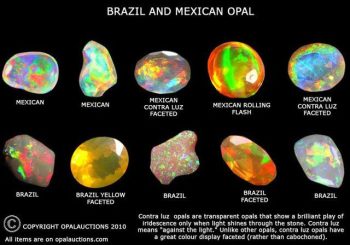
What Is Play Of Color
Play of color in opal refers to the mesmerizing display of vibrant hues that seem to dance and shift within the gemstone. It is a phenomenon that sets opals apart from other gemstones and makes them truly unique. This captivating display is caused by the diffraction and interference of light as it passes through the microscopic silica spheres that make up the opal’s structure.
The play of color in opal is a result of the way light interacts with the silica spheres. When light enters the opal, it is diffracted and scattered by the spheres, creating a prism-like effect. This causes the light to split into its component colors, resulting in the brilliant play of colors that opals are known for. The specific colors and patterns that are seen in an opal depend on the size and arrangement of the silica spheres.
Opals can exhibit a wide range of colors, including red, orange, yellow, green, blue, and violet. The play of color can appear as patches, flashes, or even a rolling pattern across the surface of the gemstone. This dynamic display is what makes opals so highly valued and sought after by collectors and jewelry enthusiasts.
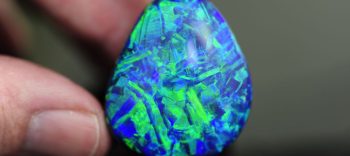
Different Types Of Opals
There are several different types of opals, each with its own distinct characteristics:
White Opals
White opals are known for their light or white body color. They are characterized by their play of color, which is the phenomenon where the gemstone displays a vibrant range of colors when viewed from different angles. White opals are typically found in Australia, particularly in the state of South Australia, where the famous opal mining town of Coober Pedy is located. These opals are formed from silica deposits that have undergone a process of weathering and erosion over millions of years. White opals are often used in jewelry, as their unique play of color adds a captivating and ethereal touch to any piece.
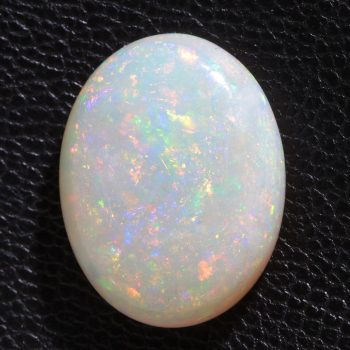
Welo Opals
Welo Opals are a type of opal that originate from the Welo region of Ethiopia. They are known for their vibrant play of colors, which can include flashes of red, green, blue, and yellow. Welo Opals are highly valued for their transparency and clarity, allowing the colors to shine through beautifully. These opals are formed through a process called hydrothermal deposition, where silica-rich water seeps into the ground and forms opal deposits. Welo Opals are often used in jewelry, such as rings, necklaces, and earrings, due to their stunning appearance and durability. Whether you’re a collector or simply appreciate the beauty of gemstones, Welo Opals are a captivating choice.
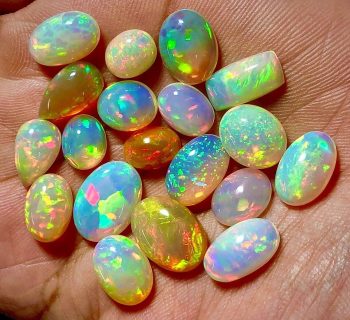
Fire Opal
Fire opals are known for their vibrant colors and fiery appearance. These opals are formed when silica-rich water seeps into cracks and cavities in volcanic rock, and over time, the water evaporates, leaving behind deposits of silica. The unique combination of silica and other minerals gives fire opals their distinctive play of color, which can range from yellow and orange to red and even green.
One of the most fascinating aspects of fire opals is their transparency. Unlike other opals, which are known for their milky or pearly appearance, fire opals are typically transparent or translucent, allowing light to pass through and enhance their fiery colors. This makes fire opals highly sought after by gemstone enthusiasts and collectors.
In addition to their stunning appearance, fire opals also have a rich cultural history. They have been treasured by civilizations throughout the ages, from the ancient Aztecs who believed that fire opals were a gift from the gods, to the modern-day Mayans who consider them a symbol of love and passion. Today, fire opals are often used in jewelry, such as rings, earrings, and pendants, and are valued for their beauty and rarity.
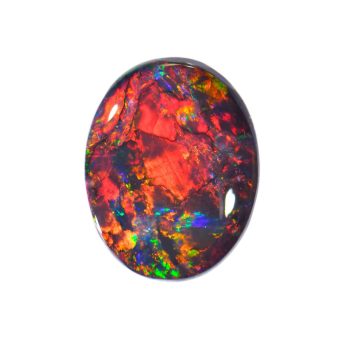
Boulder Opal
Boulder Opals are a type of opal that forms within ironstone boulders. They are unique and highly prized for their vibrant colors and striking patterns. These opals are found primarily in Queensland, Australia, and are considered one of the most valuable opals in the world.
The formation process of boulder opals begins when silica-rich water seeps into cracks and crevices of ironstone boulders. Over time, the water evaporates, leaving behind silica deposits that form opal. The ironstone matrix surrounding the opal creates a contrasting backdrop, enhancing the opal’s beauty.
One of the distinguishing features of boulder opals is their play of color. These opals can exhibit a wide range of colors, including blues, greens, reds, and yellows. The colors can appear in various patterns, such as flashes, stripes, or even intricate mosaics. Each boulder opal is unique, making them highly sought after by collectors and jewelry enthusiasts.
In addition to their visual appeal, boulder opals are also known for their durability. Due to the ironstone matrix, these opals are less prone to cracking or chipping compared to other types of opals. This makes them suitable for use in jewelry, such as rings, pendants, and earrings.
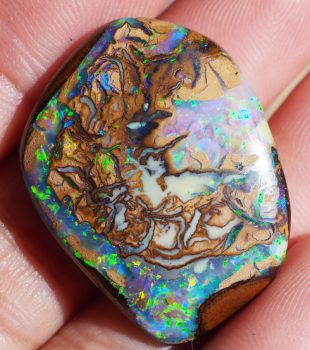
Black Opal
Black opals are highly valued for their unique and stunning appearance. They are characterized by their dark body color, which ranges from deep blue to black, and their vibrant play of colors, known as “play-of-color.” Black opals are mainly found in Australia, particularly in the Lightning Ridge region, where they have been mined for over a century.
The value of black opals is determined by several factors. These include the intensity and variety of their play-of-color, the darkness and uniformity of their body color, and the quality of their cut and polish. The most valuable black opals exhibit a full spectrum of colors. These include red, orange, yellow, green, blue, and violet, and have a deep, rich body color. They are also free from any visible flaws or imperfections.
Black opals are highly sought after by collectors, jewelry designers, and gem enthusiasts due to their rarity and beauty. They are often used as centerpieces in high-end jewelry pieces, such as rings, necklaces, and earrings. The mesmerizing play-of-color of black opals makes them a captivating and eye-catching gemstone that is sure to make a statement.
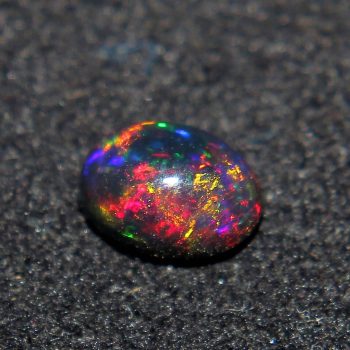
Opals In Jewelry
Opal is a popular gemstone used in jewelry due to its unique and vibrant colors. This gemstone is often cut into cabochon shapes to showcase its stunning color patterns. However, you can also find faceted opals. Opal is also valued for its rarity, as it is only found in a few locations around the world. It is a delicate gemstone that requires proper care to maintain its beauty and prevent damage.
Opal jewelry requires special care to maintain its beauty and durability. To keep your opal jewelry looking its best, follow these simple guidelines.
Firstly, avoid exposing your opal jewelry to harsh chemicals or extreme temperatures. Opals are delicate gemstones that can be easily damaged by chemicals found in household cleaners, perfumes, and hairsprays. Additionally, extreme temperatures can cause opals to crack or lose their vibrant colors. It is best to remove your opal jewelry before engaging in activities that may expose it to these elements.
Secondly, store your opal jewelry properly when not in use. Opals are relatively soft gemstones and can be easily scratched or chipped. To prevent damage, store your opal jewelry in a soft pouch or a separate compartment in your jewelry box. Avoid storing opals with other harder gemstones or metals that may scratch or damage them.
Lastly, clean your opal jewelry regularly but gently. Use a soft, lint-free cloth to wipe away any dirt or oils that may have accumulated on the surface of the opal. Avoid using harsh cleaning solutions or ultrasonic cleaners, as they can damage the delicate structure of the opal. Instead, opt for a mild soap and water solution and gently scrub the opal with a soft brush. Rinse thoroughly and pat dry with a clean cloth.

We Make Custom Jewelry
If you are looking for Opal Jewelry, then a custom jeweler is the best option for you. With custom jewelry being made from the ground up, the stones are sources specifically for your piece. This means you can choose from any opal available at the time. In contrast with a chain retail store, you will be limited to what they have on hand. And with opals not being a widely popular stone, your selection will be severely limited.
So check out out portfolio of custom pendants and rings. Then, contact us with your idea.
